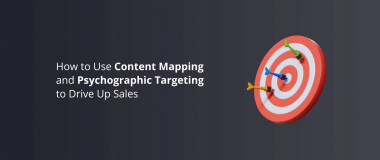Content marketing costs significantly less than traditional marketing as of 2022. When we add up the fact that the biggest priorities of marketers are generating website traffic and converting prospects, the importance of inbound practices is becoming undeniable. Delivering the right content to the right people at the right time is what KPIs are craving for today.
The general trust in brands has been shaken. According to the Drum, it’s the most significant dip since 2008. The current state of the market makes it harder for newcomers and non-established names to reach consumers. Because of this, an enormous challenge facing companies today is for them to appear trustworthy.
To gain the audience’s trust, a brand needs to first introduce itself to consumers and then appeal to them through content. This approach could easily shape the view of users, as it’ll present the brand as a source of valuable, helpful information. However, to engage potential clients, the brand needs to find and reach them first.
Be Mindful of Your Competition
Do you know how many other brands are offering similar services/products to yours in your market niche? You should. You should know how they are reaching your audience to understand what you can do better than them.
The competitiveness in digital marketing today makes it extremely hard to form a community around your company. To gain a substantial amount of followers you need to differentiate yourself.
One of the ways to engage with consumers and convert leads is through unique content, a product, or a service. Another way is to find the people that are interested in what you offer, and either weren’t satisfied by competitors or weren’t reached by them in the first place.
Monitor Consumer Behavior Constantly
To target those people you need to work with a lot of information, use a lot of market insights and follow your instincts down roads no one has ever thought of observing before.

To reach the ideal audience that your brand and its culture is going to appeal to, you have to first understand the market, how it moves and shifts so that you can get insight on consumer behavior.
For example, the statistics showing that 72% of consumers use voice search on a daily basis as of 2022 immediately suggest that early adopters of such practices will be able to reach substantially larger audiences.
In addition to this, voice searches are usually longer in terms of characters than typed ones. This trend suggests that SEO optimization will now include more “spoken-like” longer headings of articles and content that might be distributed especially to voice searching individuals.
The competitive buzz on the market, alongside consumers searching for real experiences on the web, now takes marketing in a direction, where understanding human complexity and basing content strategy on it, is now the new recipe for success.
Many brands are already answering to the needs of consumers. Thus, the investments in talent acquisition will be aimed towards customer analytics specialists rather than channel-specific marketing solutions and staff.
So, let’s dive into the practical talk!
Facebook Is Not on the Throne Anymore
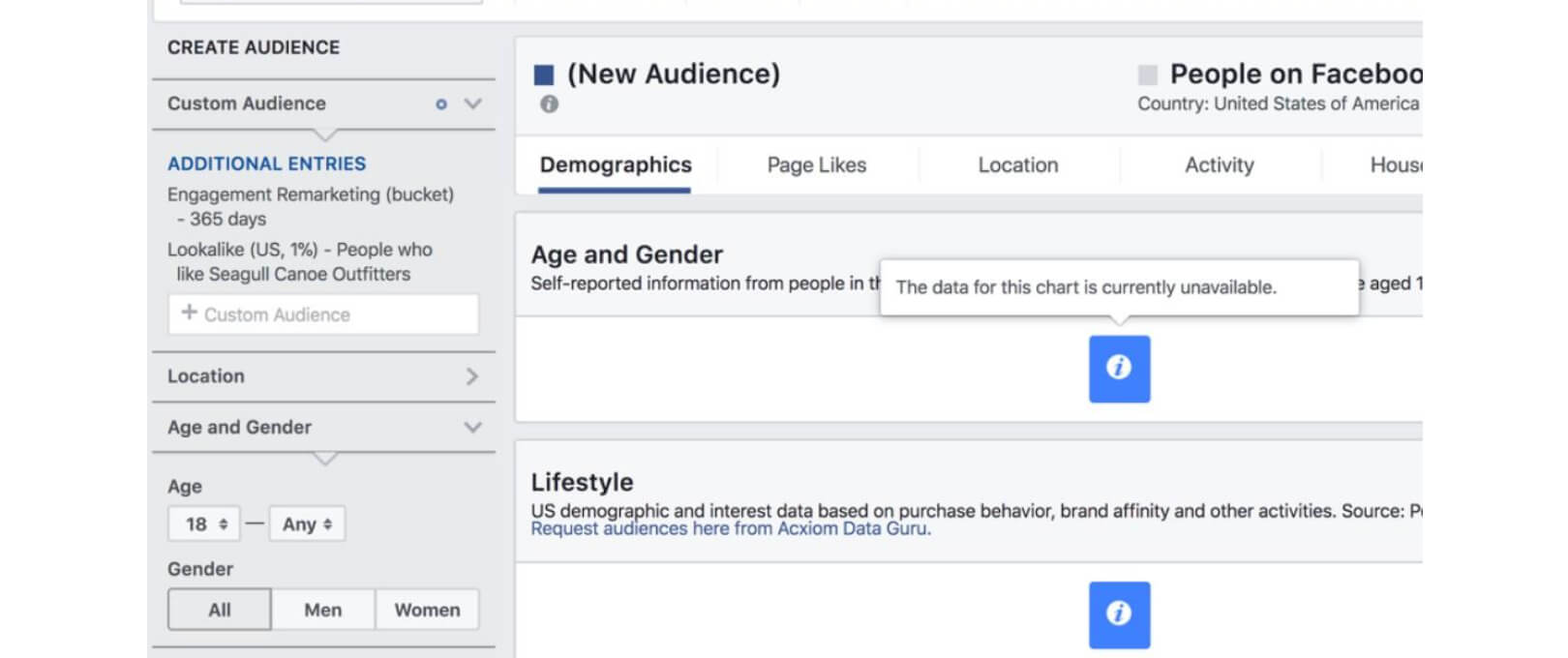
For example, take the scandals around information leaking, psychographic targeting being used to manipulate the US elections in 2018, and the following investigation by US Congress have put Facebook at the front of the most serious crisis since its establishment.
Mark Zuckerberg has not only been questioned by Congress but has taken on the responsibility to answer specific requests such as a way to gather less information on consumers and how to change the platform’s Terms and Conditions.
Some have even stated that the social network had too many ways to “like,” “react” or state interest in something, and asked whether Facebook could be made less reaction-oriented.
All of these firm suggestions, given by congressmen, might deride the popular social network from being marketers’ favorite place for research and campaigning.
The first changes didn’t take too long to arrive. The ability to slice psychographics through custom audiences is now gone. In the eyes of marketers and social researchers, this change is a big step backward. The professionals that viewed Facebook as a progressive partner are now slightly disappointed, and their trust in social media has been a bit shaken futurewise.
Now, the only information you can get is through Facebook Connections. The new way of targeting allows you to analyze your leads in the social network (users who followed your page, engaged with an event, viewed your video, or used your app). The new mechanics of Facebook will be the rebirth of Like-campaigns.
Marketers have long ago understood big audiences don’t mean big ROI. Thus, granular (specific) targeting and reaching leads you could convert was the primary focus.
But now a campaign that aims at getting more followers, no matter if they’re active or not, will present brands with a substantial user sampling through which to gain valuable information. Market insights have now become a highly paid resource to use in social networks.
Facebook Connections Targeting
The new Connections Targeting can also become the reason for the rise of ill-practices. Things like stealing a page can now be of even more value to social hackers, and it’ll present additional market insight. Also, you’ve most probably seen some of the ads on Facebook that are coming from poorly-developed, rarely posting, and clearly misleading pages.
Such advertisers might be using a page called “How to save money” to promote project-management apps, website optimization services, or other products as great money-managing tools. A lot of these pages gain a significant number of followers due to abusing consumer interests.
Now shady advertisers will not only be pushing the boring old “buy” messages, but they will also be able to gather additional knowledge on the users they want to target.
The freedom that the new Facebook Connections Targeting gives to shady practices along with the opportunity it takes away from forensic researchers (the removal of Custom Audience Insights) might deride the platform from being a business favorite.
Until now, companies viewed the social network as one of the most powerful marketing tools, having over 900 million users’ samples and tons of additional information on various groups.
The curbing of these features will substantially affect Facebook. Although, the social network will most likely foresee this trend, and thus, we might see Custom Audience Insights returning in the near future.
Twitter’s Custom Audiences
Facebook might be changing, but so is Twitter. Though the two social media platforms might be running in very different directions. Twitter has introduced its Custom Audiences, their own version of custom audiences. What’s unique about this advertising resource is that it can be used to target not just groups but individuals by their Twitter handles.
You can construct a relevant audience to reach without choosing to handle data such as addresses, emails or phone numbers. Most importantly, this approach is within the boundaries of privacy limits, making it the perfect solution to use by social media marketers. Compared to what we’ve seen so far in social media marketing, this might be the most potent leads-generating practice ever created.
The revolutionary method to target users using public Twitter handles could be done by constructing a Tailored audience by uploading your own list. It’s vital to point out that the minimum number of individuals you can target via their Twitter handles is 500.
The practice might be time-consuming, but the possibility of reaching exactly the people you want, based on their Twitter behavior, is enormous.
So, let’s start gathering the information you need to create this list of users.
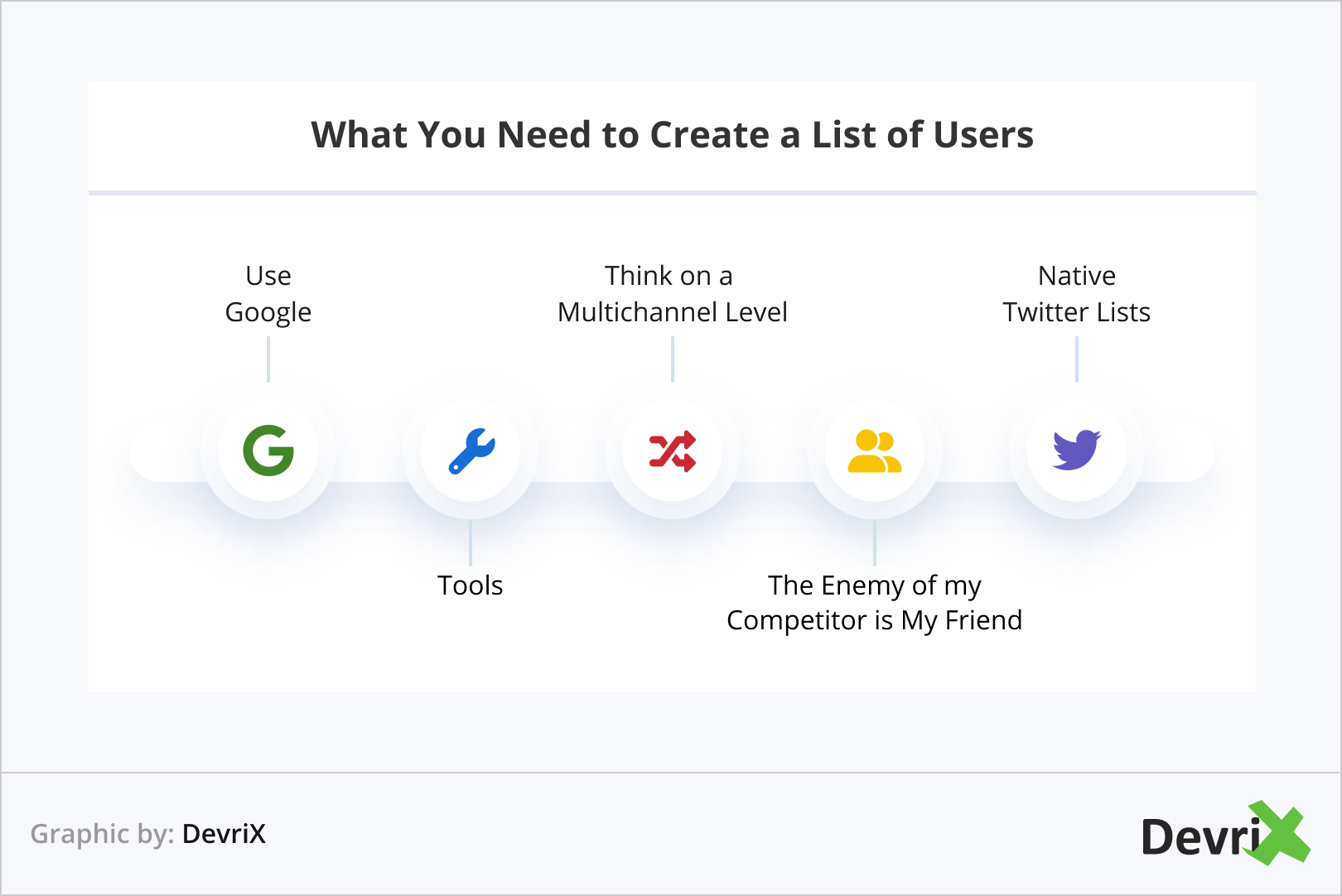
Use Google
The search network is your best friend. You can start by searching for “top [profession/industry] Twitter.” There are literally hundreds of curated lists (groups of Twitter accounts listed by handles) you could use to find influencers and users who have a great number of followers.
What you then need to do is go through their audiences (followers) and start adding them to your list. These people are already interested in the topics on which your content is based, and thus will be a great audience for your next intent-based campaign.
For example, if you are opening a new e-commerce music store, you want to target the people that are listening to the music you’ll be selling. So you find the artists, whose albums and tracks will be in your e-store, and appeal directly to their audience.
Tools
There are some handy tools like Sysomos MAP that you can use to reach users who’ve tweeted a specific keyword or included it in their profile. Through such software, you could easily find everyone who’s stated they’re a DJ and advertise directly to them.
If you manage to convert such leads to clients, they might become your brand’s ambassadors to smaller audiences who listen to their music.
Think on a Multi-Channel Level
You rarely conduct a campaign on a single channel. If you are advertising on a blog, media or TV channels search for their handles on Twitter. They might have, not only a followers base, but also lists with valuable contacts: TV and radio hosts, editors, and producers. Grab the handles of those people and add them to your list; they’ll be of great use when it comes to brand awareness.
In such a manner, you could find local music radio hosts to promote your website, media that might write an article about you, and most importantly – when it can directly appeal to their audience.
The Enemy of My Competitor Is My Friend
Search “[competitor/industry] isn’t” or “[competitor} won’t.” Find the consumers that are complaining about other brands on the market. Try to understand their problems and needs, and reach them with an advertisement that answers those issues.
For example, you might’ve found that a lot of people are not happy with customer support, delivery times and the lack of underground music. So, that might be a niche in the market that your brand could fill. Appealing to those customers with a message similar to “The vinyl you’ve been forever searching for can be dancing on your turntable in no time!” might turn out to be your leads-converting advertisement.
Native Twitter Lists
A lot of brands, especially large media publishers, use various native Twitter lists to monitor their community, personnel, and users they deem worth tracking. As marketers, these contact databases could be of great value. Just imagine that outlets like FoxNews have active lists of politicians. So, in our case, we’ll be looking for people from radio hosts to editors of entertainment and music media.
Converting each one of these people means winning over their audiences as well.
With the revolutionary way of targeting individuals through the Tailored Audiences in Twitter, marketers and social reaches may have been given their most significant weapon so far. This places social media in the leading spot that everyone has wanted to take from Facebook for a very long time.
Search Engines
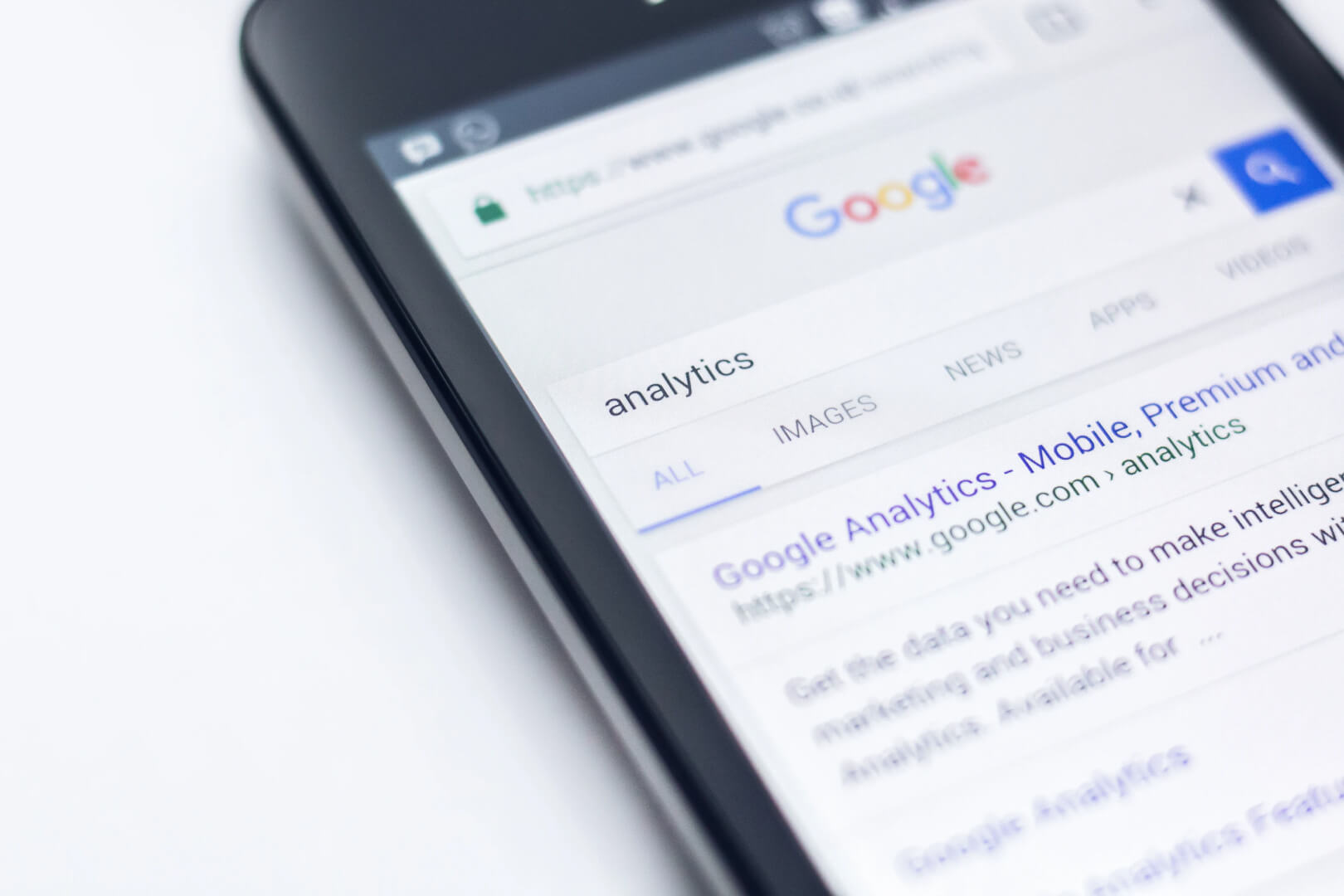
Paid search advertising has been one of the most steadily developing fields of marketing over recent years. Although there aren’t any rapid changes being introduced by Google, the voice and visual search are definitely the trends brands should be considering.
Paid search marketers are also adopting the holistic approach and adding their Facebook-cookied users to Remarketing Lists for Search Ads (RLSA). This way it’s possible to deliver more personally-tailored and relevant messages to consumers and thus, generate a sweet number of leads.
But let’s say your music-selling website can only deliver to US-based users. Back in the days, search engines were able to target through specific locations and ZIP codes, but what happened was that once a user wasn’t on the selected physical site, then the potential client couldn’t be reached by adverts.
Now, Google is offering a way to target both people in a specific area, and those who are interested. This is a great opportunity for granular targeting that will make your campaigns way more efficient. So it’s a good idea to keep it in mind.
Video as a Pretargeting Mechanism
When it comes to engagement, especially in social media, video is king. It’s the content that generates the most views, is comparatively cheap and most importantly – allows you to continue building upon your story later on.

Both Facebook, Twitter, and YouTube offer a significant opportunity to retarget users who have previously engaged with (watched) your video content. When it comes to how costly campaigns can be, especially now on Facebook as well, remarketing might be the best option for advertisers.
What’s even more outstanding when it comes to YouTube, is the fact that you can target people who’ve watched specific videos on the platform, even from channels you do not own.
Using inexpensive social media video that has robust engagement rates as a pretargeting tool could be of great value. This way marketers could run expensive campaigns, aimed at people who’ve already engaged with their content. You could imagine this will reflect significantly on metrics like cost-per-client and ROI.
Reach The Right Audience On Instagram
The content that you post on Instagram should be targeted to the people who matter most.to you, your brand and what you stand for. Therefore, to make sure your marketing on Instagram is on point, you need to reach the right crowd.
Instagram offers a variety of targeting options that allow you to reach your ideal audience. You can target users based on their interests, demographics, and even their past behavior on Instagram.
If you’re advertising a new line of knee-high boots, for example, you may target Instagram users who have previously engaged with footwear content. You can ensure that your material is seen by people who are most likely to be interested in it by targeting your Instagram posts to the appropriate audience.
Also, make use of categories to ease your customer’s navigation:
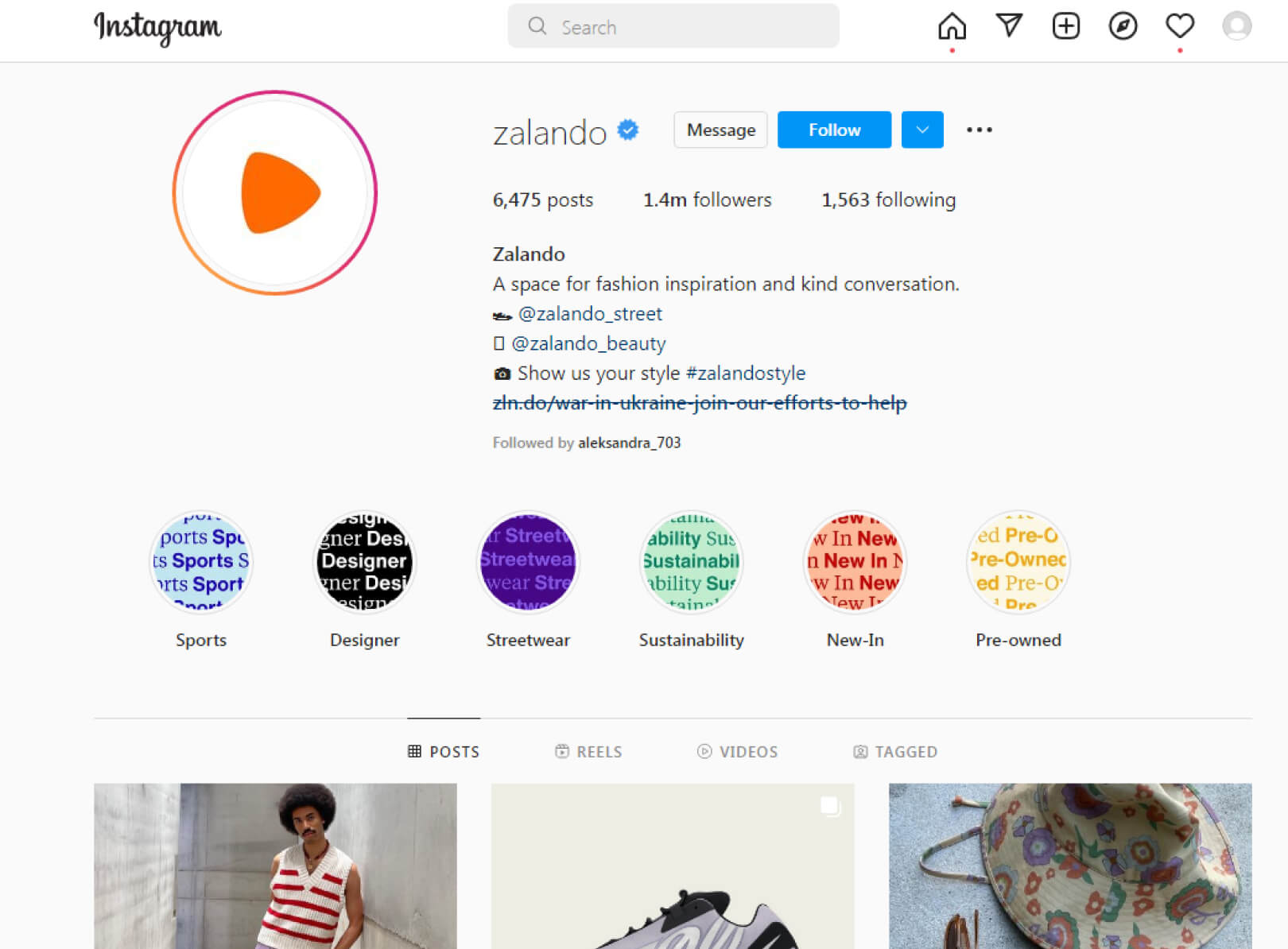
If you want to make a name for yourself on Instagram, you should concentrate on producing material that appeals to your target audience. Trying to create a large amount of content might be daunting, and it can actually hinder the development of a unified brand identity. Instead, concentrate on creating three to four pillar themes that you can consistently produce content about.
As a marketing strategy, this approach is competitive with influencer campaigns in the sense that it limits access to followers. However, there are distinct advantages to utilizing this approach over other strategies. This method will aid you attract the best sort of followers while keeping them engaged with your material. Keep in mind that Instagram is primarily a visual platform, so make sure you upload high-quality visuals to your feed.
Retargeting as a Marketing Must
As we’ve already pointed out – retargeting is becoming an effective way to run costly campaigns to a very specific audience. It is now a tool to reach consumers who’ve already engaged with your content so that you can convert them more efficiently.
There are 4 basic types of retargeting:
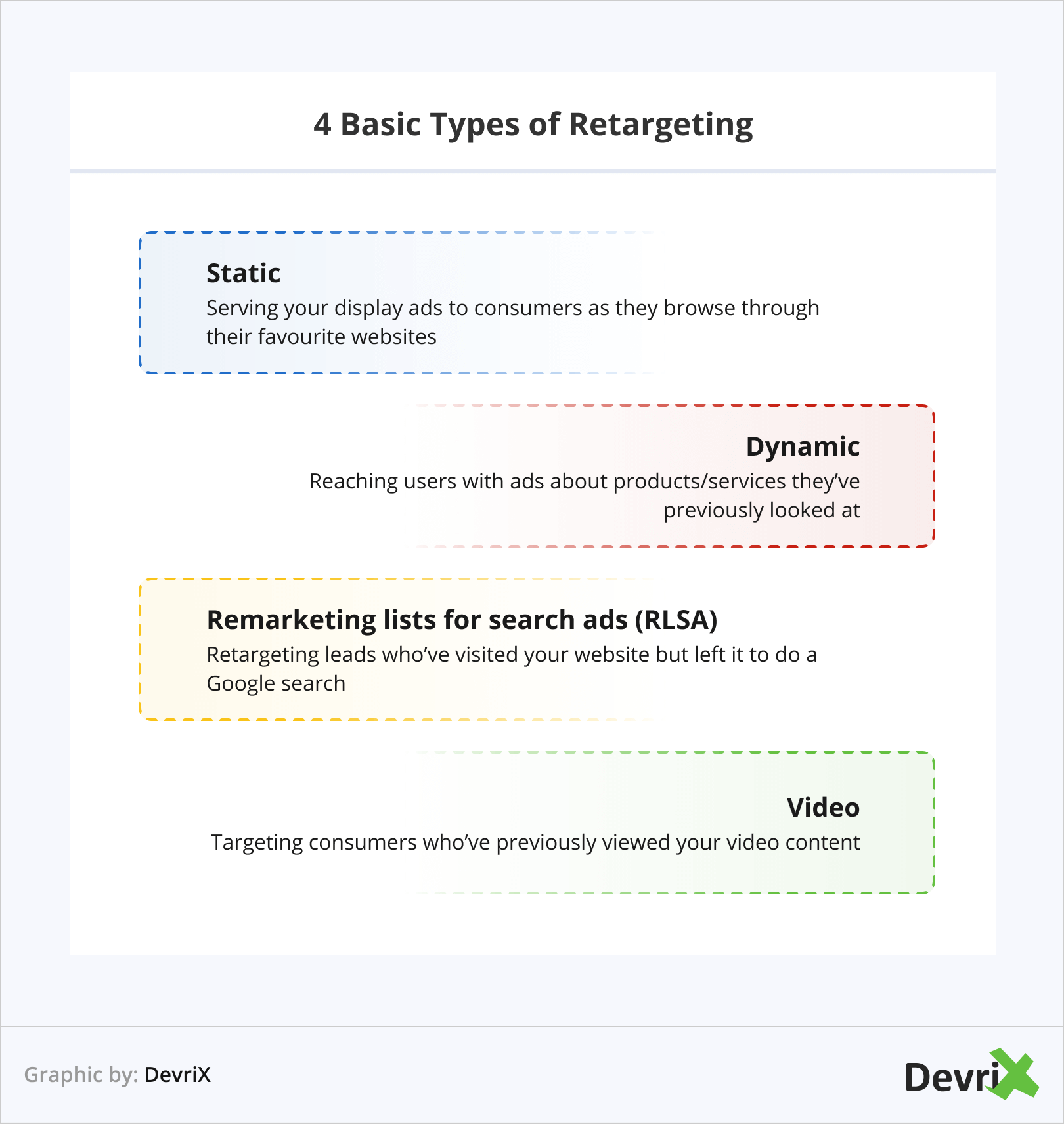
The end of Custom Audiences doesn’t mean the end of psychographic targeting. We’ve been doing this long before the opportunity to gain market insights was introduced on Facebook. Recent changes mean, we’re back to the good old ways – driving web traffic from social media, keeping track of users through UTM tags and setting Google and Facebook cookies on our websites.
We should use our past expertise to reach our known audiences with RLSA, filtered FB retargeting, and others.
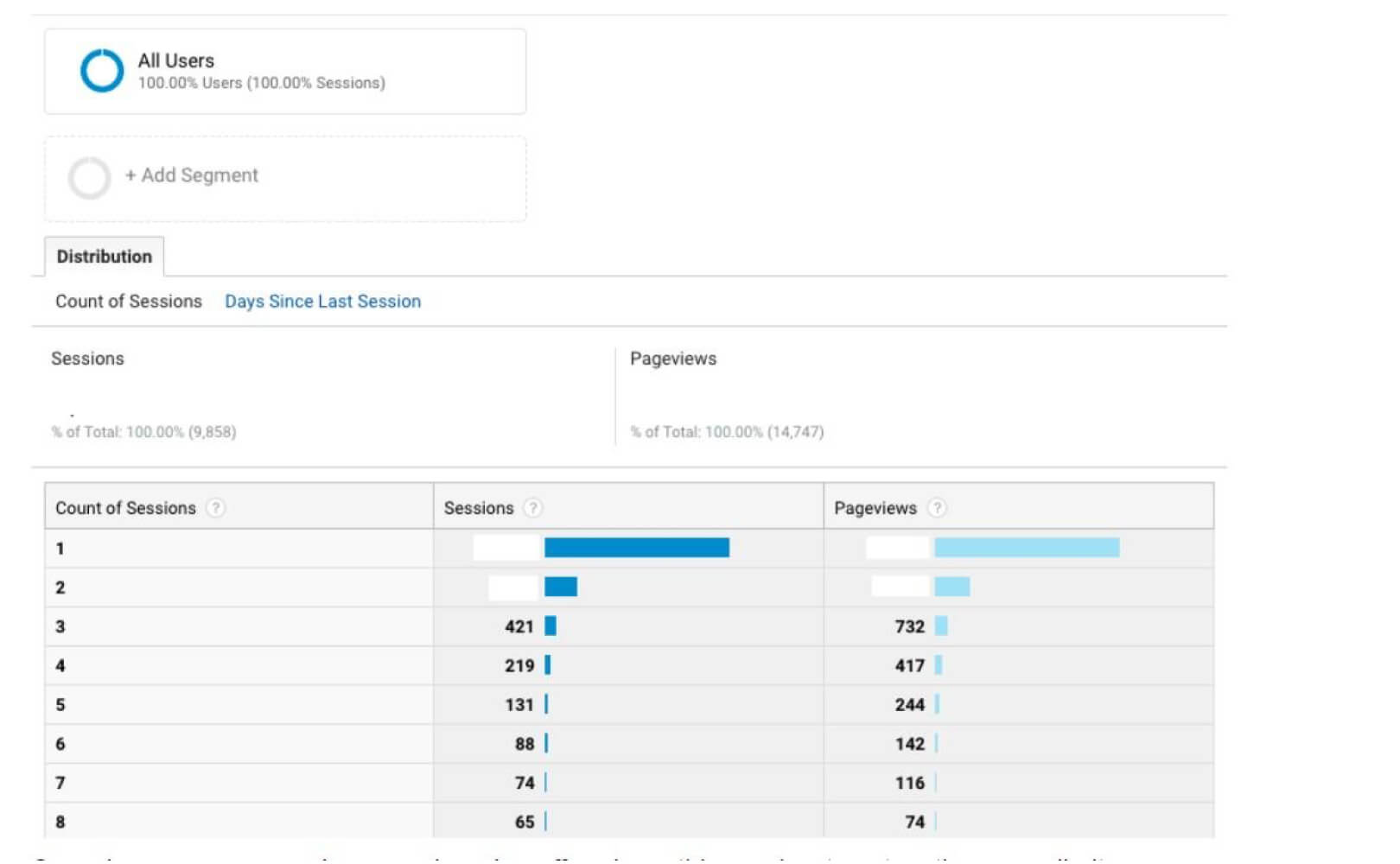
Don’t forget retargeting also has its own life cycle. Linking your AdWords and Google Analytics accounts could provide you with significant information on this. In the report section, you can select an “interaction type” (a drop-down menu) and then check the “Impressions” box to see impressions and conversions showed by frequency (count of sessions).
Through these statistics, you could easily determine after which session your retargeting campaign just stops working and use it as an upper-limit frequency benchmark.
New Horizons
As the market becomes more and more competitive, campaigning to broad groups of people is expensive and ineffective. Granular targeting lets advertisers reach specific (groups) consumers who are going to be interested in their service/product. It is not only a cost-efficient practice anymore, but it is an efficient way to generate and convert leads.
The market specifications make content strategy a powerful weapon that brands could use to leverage social media’s organic traffic. The emphasis on the importance of inbound marketing is also strengthened by Facebook’s new insights mechanics. Thus, generating more leads will inevitably present analysts with a more profound perception of the market and considerable user data to work with.
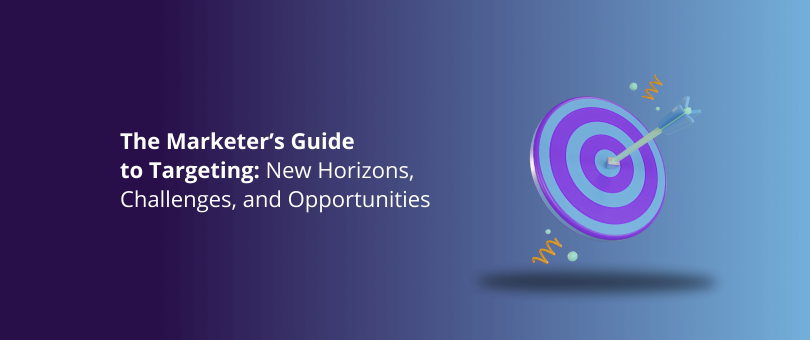
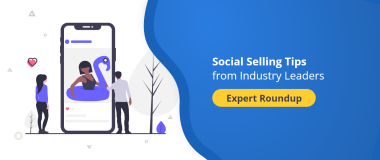
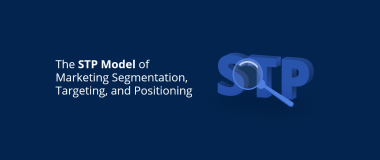
![[Infographic] 24 Fundamental Email Marketing Stats](https://devrix.com/wp-content/uploads/2018/01/Infographic-24-Fundamental-Email-Marketing-Stats-380x160.png)
